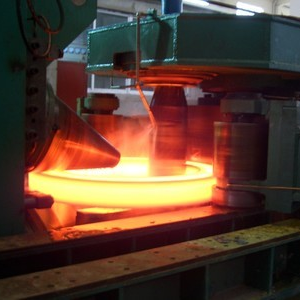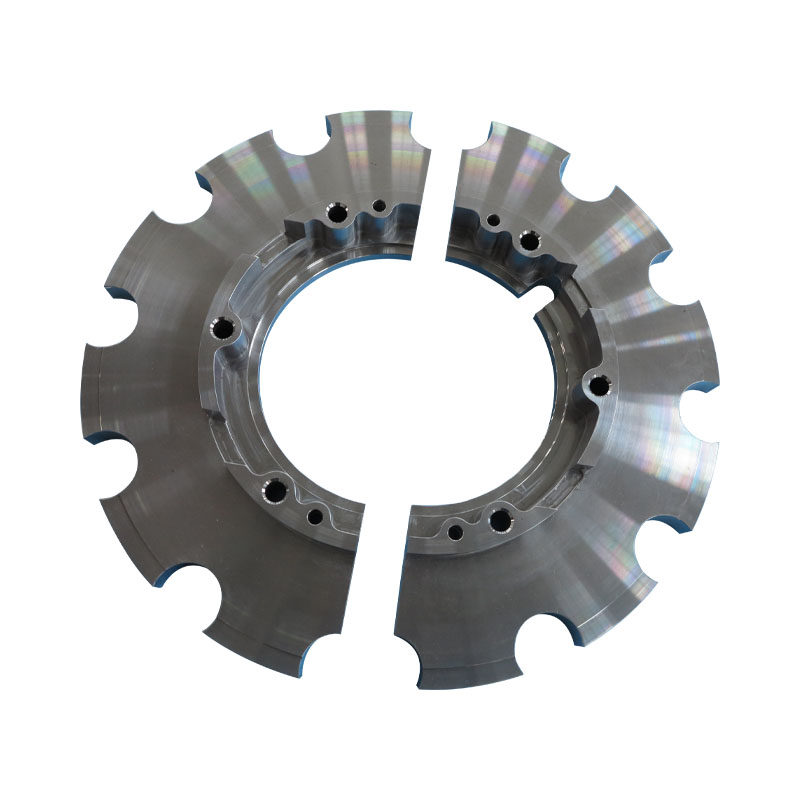There are many kinds of flange forging processing technology, different process forging flange quality also has a great difference, the price is no small difference, below, let us look at the flange manufacturers to explain to you the common four kinds of processing technology.
Four kinds of forging processing technology of flange:
1 scrap iron - smelting - embryo!
This is a forging method with very low cost. Most of it is processed in the smelting furnace of small workshops, so the material is difficult to be guaranteed, and the tire will have pores.
2. Plate - Cut!
Usually choose the steel plate produced by regular enterprises, the material is regular, more used for the processing of small aperture, tread is relatively smooth, the cost is not high, the quality is also possible, and the processing is also relatively simple.

3. Steel plate - cutting - heating - simmering roll!
This kind of processing is mostly used for large diameter flanges, and there will be an interface to be welded in the middle. However, after processing, the welding joint is basically invisible, but it is not recommended to use it on high pressure pipelines.
4. Forging flange!
The flange density of forging processing is high and the material is good, the quality is not to say, but the processing is more troublesome.
The above is for flange common four kinds of forging process knowledge is introduced, I hope to be helpful to you.
The role of stainless steel welding flange and matters needing attention
As the standardization of stainless steel butt-welded flanges started late in our country, stainless steel butt-welded flanges have few varieties and specifications, small production scale and poor circulation for a long time. There are a lot of low-end products and very few high-end products. Some high-end enterprises produce high-end products, which are affected by the high price of stainless steel butt-welded flanges. For China's stainless steel butt welding flange enterprises, there is no concentration, too many factory sites, too scattered, product quality can not keep up with; For the fastener mold market, disorderly competition is the market chaos. Now, let's explain the role of stainless steel butt-welding flange and matters needing attention.



1:The main role of stainless steel welding flange
Stainless steel butt-welded flanges are disc - shaped parts, which are most common in pipeline engineering. Stainless steel flanges are used in pairs. In pipeline engineering, stainless steel flange is mainly used for pipeline connection. Here, the main role of stainless steel welding flange manufacturers is:
1. Connect pipes and keep them sealed;
2, stainless steel butt-welding flange, easy to replace a certain section of the pipeline;
3, stainless steel butt-welding flange is easy to open and check the condition of the pipeline;
4. Convenient to close some pipes.
The material is carbon steel, the flange is called carbon steel flange, the flange is two large diameter pipe connecting device, usually two flanges plus some fastening bolts. Carbon steel flange is made of carbon steel. Low carbon steel has good ductility and low strength. Add the right amount of carbon and it hardens and becomes less plastic. Flanged connections may be required to withstand high strength, compression, torsion, and shear strength of carbon steel. Flanges are a better option.
2:The use of stainless steel butt welding flange matters needing attention
1. In order to prevent the eye corrosion caused by the heat of the stainless steel butt flange cover, the welding current should not be too large, 20% less than the carbon steel electrode, the arc should not be too long, the layer is fast cooling, suitable for the welding seam is narrow. .
2, when using the electrode should be kept dry, titanium calcium type should be drying under 150 ° C for 1 hour, low hydrogen type should be drying under 200-250 ° C for 1 hour (do not repeat many times, otherwise the skin easily crack and spalling), in order to prevent the electrode coating by oil and other dirt sticking to, in order to prevent the increase of weld stainless steel butt welding flange carbon content and influence of welding quality.
3. When welding stainless steel butt flange, the carbide will be repeatedly heated to reduce corrosion resistance and mechanical properties.
4. After welding the chrome stainless steel to the flange, the hardened American standard flange is larger and prone to crack. If welding is performed using the same type of chromium stainless steel electrode (G202, G207), it must be preheated at 300°C or higher and cooled slowly at around 700°C after welding. Stainless steel butt-welded flanged electrodes (A107, A207) should be used if the weldment cannot undergo post-weld heat treatment.
Post time: Jun-18-2021
